Purple Hat Therapy and the Evolution of Alternative: Psychotherapies  From Energy Meridians to Polyvagal Stimulation
From Energy Meridians to Polyvagal Stimulation
Purple hat therapy, a novel approach claiming to heal through the power of colored headwear, has recently gained attention in the alternative therapy world. While its proponents assert that purple hats synchronize neural activity between brain hemispheres, this explanation lacks scientific evidence. However, purple hat therapy is not the first unconventional treatment to emerge in the history of psychotherapy. Many alternative therapies, despite their questionable theoretical foundations, have paved the way for more refined and effective treatments.
Since the early days of Freud and Jung, psychotherapy has continuously evolved through a process of innovation, critical examination, and refinement. This historical progression reveals how even controversial therapeutic approaches can contribute valuable insights to our understanding of the human mind and eventually lead to evidence-based practices.
Foundations: Freud, Jung, and the Birth of Modern Psychotherapy
Before examining contemporary alternative therapies, it’s essential to understand the foundational contributions of early psychotherapists who shaped the field. Sigmund Freud and Carl Jung, often regarded as the founding fathers of psychotherapy, revolutionized our understanding of the human mind despite their theoretical differences.
Freud’s psychoanalytic approach emphasized unconscious processes, repressed desires, and childhood experiences as driving forces behind human behavior. His concepts of the id, ego, and superego provided a structural model of the psyche that continues to influence psychological thought today. While Freud made significant contributions to understanding psychological functioning, his theories faced criticism for being “untestable, Eurocentric, and based on subjective, non-scientific methods”.
In contrast, Jung disagreed with Freud’s emphasis on sexual desire as the primary driver of human nature, proposing instead a broader “Life Energy” that encompassed the desire to attain “Individuation,” a state of self-realization. Jung’s analytical psychology introduced concepts like the collective unconscious, archetypes, and psychological development that continues throughout an individual’s lifetime.
Where Freud was correct was in recognizing the profound influence of unconscious processes and early childhood experiences on adult behavior and psychopathology. His development of the “talking cure” that allowed patients to verbalize their distress created the foundation for all modern psychotherapies. However, his rigid adherence to sexual theories as explanations for all psychological phenomena limited the scope of his approach.
Jung rightfully expanded the understanding of the human psyche to include spiritual dimensions and collective human experiences. His concepts of introversion and extraversion “have contributed extensively to personality psychology and have greatly influenced psychotherapy”. However, Jung’s theories have faced criticism for their mystical elements that are difficult to verify scientifically.
Energy Meridians and Emotional Freedom Technique (EFT)
One contemporary alternative approach is the concept of energy meridians, which is central to Emotional Freedom Technique (EFT). EFT involves tapping on specific points along these supposed energy pathways to alleviate psychological distress. Although the existence of energy meridians has not been scientifically validated, some studies have found EFT to be effective in reducing anxiety and depression.
The efficacy of EFT has gained increasing empirical support in recent years. According to research, “Emotional Freedom Technique (EFT) is an evidence-based self-help therapeutic method and over 100 studies demonstrate its efficacy” for treating various conditions. A systematic review of randomized controlled trials has shown encouraging outcomes for several conditions, including anxiety, depression, and PTSD.
Multiple meta-analyses have evaluated EFT’s effectiveness. One analysis found that EFT’s effectiveness for PTSD may be related to its combination of exposure and cognitive elements, as “therapies using exposure and cognitive shift were efficacious” according to the US government’s Institute of Medicine. Another study examining depression found a very large effect size (Cohen’s d = 1.31) that was maintained at follow-up periods.
Research shows that “a series of 4-10 EFT sessions is an efficacious treatment for PTSD with a variety of populations,” with studies reporting “no adverse effects from EFT interventions”. This suggests that EFT can serve as both a self-help technique and a primary treatment approach.
However, EFT remains controversial in some scientific circles. Critics have described the theoretical model for EFT as “frankly bizarre” and “pseudoscientific,” arguing that its effects may be “attributable to well-known cognitive and behavioral techniques” rather than the proposed energy mechanisms. This highlights the importance of continuing rigorous research to better understand the actual mechanisms underlying EFT’s reported benefits.
The connection between energy meridians and modern biological understanding remains tenuous. Yet, the clinical outcomes associated with EFT suggest that regardless of the theoretical explanation, something beneficial may be happening when these techniques are applied. This points to the possibility that energy meridian concepts may be a metaphorical precursor to our current understanding of the complex connections between the body and the brain.
Polyvagal Theory and Its Applications
Further research on Poly Vagal Theory may help explain why EFT and its concept of meridians are effective. Developed by Dr. Stephen Porges, polyvagal theory posits that the vagus nerve plays a crucial role in regulating emotional and physiological states. This theory has given rise to innovative therapies that aim to stimulate the vagus nerve through various means, such as specific breathing techniques, vocalizations, and even cold exposure.
According to Porges, “Social behavior functions as a neuromodulator optimizing behavioral, autonomic, and emotional state regulation,” suggesting that social interactions can directly influence physiological processes. The theory emphasizes how the autonomic nervous system evolved in mammals to support social behavior and emotional regulation.
At its core, polyvagal theory describes “an autonomic nervous system that is influenced by the central nervous system, sensitive to afferent influences, characterized by an adaptive reactivity dependent on the phylogeny of the neural circuits, and interactive with source nuclei in the brainstem”. This complex understanding of autonomic functioning has expanded our perspectives on trauma responses and emotional regulation.
The theory introduces the concept of “neuroception,” a process that “reflexively detects risk or safety without awareness and shifts autonomic state to support adaptive behaviors”. This helps explain why trauma survivors may experience physiological reactions to stimuli that consciously they know are safe but that their nervous system perceives as threatening.
However, polyvagal theory is not without its critics. Some researchers argue that “there is no credible evidence that the [dorsal vagal motor nucleus] plays any role in massive bradycardia,” contradicting some of the theory’s key assertions. Additionally, the evolutionary claims of the theory have been questioned, with some researchers noting that the social/asocial dichotomy between mammals and reptiles oversimplifies complex social behaviors found across species.
In response to these criticisms, Porges has stated that “the theory was not proposed to be either ‘proven’ or ‘falsified’, rather to be informed by research and modified”, suggesting an openness to refinement based on emerging evidence.
Despite these controversies, polyvagal-informed therapies have gained popularity among clinicians working with trauma, anxiety, and emotional regulation difficulties. Therapeutic approaches based on this theory focus on creating safety, promoting social engagement, and helping clients develop greater awareness and control of their autonomic states. The connection between energy meridians and the polyvagal system may lie in their shared focus on the body’s subtle energy systems and their influence on emotional well-being.
Emotional Transformation Therapy (ETT) and the Science of Color
Another therapy that has taken a rigorous approach to validating its mechanisms is Emotional Transformation Therapy (ETT), developed by Dr. Steven Vazquez. ETT uses colored light stimulation to evoke specific emotional and semantic associations in patients.
ETT combines “traditional talk therapy with the use of colored light to achieve faster results,” with the goal of stimulating the brain with lights and colors to reshape “the neural impulses that affect the nervous system and brain”. This non-invasive, non-pharmaceutical approach aims to access and transform emotional patterns more rapidly than conventional talk therapy alone.
Dr. Vazquez went to great lengths to ensure that the colors used in ETT were the actual mechanism of change, rather than mere suggestion or placebo effects. In a groundbreaking study, Dr. Vazquez worked with a blind patient who had an intact optic nerve. Even though the patient could not consciously perceive the colors, they still displayed the same emotional and semantic associations as sighted participants. This finding suggests that ETT’s effects may be mediated by the way the brainstem processes visual information before it reaches the occipital lobe, rather than relying on pre-existing memory associations or suggestion.
The theoretical foundation of ETT draws from various fields, including epigenetics, optometry, neurobiology, and quantum physics. Vazquez incorporated insights from these diverse disciplines to develop a therapeutic approach that addresses both psychological and physiological aspects of emotional distress.
However, despite its innovative approach and reported clinical successes, ETT’s evidence base remains limited. Critics note that “although there have been a few studies on ETT, all have been performed by Vazquez himself, so the scientific validity or effectiveness of ETT is not currently known”. This highlights the need for independent research to validate the claims associated with this therapeutic approach.
Despite these limitations, ETT represents an interesting example of how alternative therapies attempt to integrate multiple modalities—in this case, traditional psychotherapy with sensory stimulation—to enhance therapeutic outcomes. The approach’s focus on rapid transformation aligns with a growing interest in briefer, more efficient therapeutic interventions in contemporary mental health practice.
From Brainspotting to Connolly’s Method
The concept of “brainspots,” developed by Dr. David Grand, has also been subject to scientific scrutiny. Brainspotting involves identifying specific eye positions that correlate with emotional activation and using these positions to facilitate processing of traumatic memories.
According to Grand, brainspotting is based on the principle that “where you look affects how you feel,” suggesting a relationship between eye positions and brain activity associated with emotional experiences. The approach hypothesizes that maintaining certain eye positions helps access emotional energy trapped in non-verbal, non-cognitive areas of the brain.
While some research supports the efficacy of brainspotting, more studies are needed to elucidate its precise mechanisms. Critics argue that “such conceptualizations do not accurately reflect how memory functions in the brain” and note that there is “very little quality evidence of efficacy or effectiveness of brainspotting”. Existing studies have been critiqued for methodological limitations, including small sample sizes and potential researcher bias.
Despite these criticisms, brainspotting has gained popularity among clinicians working with trauma. Proponents describe it as “a powerful, focused treatment method that works by identifying, processing and releasing core neurophysiological sources of emotional/body pain, trauma, dissociation and a variety of other challenging symptoms”.
Building upon Dr. Grand’s work, practitioners have developed related approaches. One such method is Grant Connolly’s ZPoint process, which was created to address “deep issues dealing with Anger, Shame, Resentment, Anxiety and Physical and Emotional Abuse”. While this approach shares some conceptual similarities with brainspotting, it emphasizes different aspects of emotional processing and self-regulation.
Another related approach is Thought Field Therapy (TFT), which attempts to resolve negative emotional states through specific protocols that include tapping on acupressure points. TFT has been studied in various populations, including trauma survivors, though more research is needed to establish its efficacy compared to other evidence-based approaches.
Throough Intuition to Evidence
As we continue to explore new frontiers in psychotherapy, it is crucial that we remain open to innovative ideas while also subjecting them to rigorous scientific testing. The evolution of alternative therapies, from purple hat therapy to energy meridians, polyvagal stimulation, and the use of color in ETT, reminds us that the field of psychotherapy is constantly evolving. By carefully designing studies and examining the mechanisms underlying these approaches, we can separate the wheat from the chaff and develop more targeted, effective interventions for our patients.
It is essential to recognize the connections between seemingly disparate therapies, such as the link between energy meridians and polyvagal theory, or the shared focus on eye positions in brainspotting and Connolly’s Method. By understanding these commonalities, we can better appreciate the complex interplay between the mind, body, and emotions, and develop integrative approaches that address the whole person.
From Freud and Jung’s foundational work to today’s innovative therapeutic approaches, psychotherapy has continuously evolved through cycles of innovation, critical examination, and refinement. This historical perspective reminds us that even controversial approaches may contain valuable insights that, when properly investigated, can contribute to more effective treatments.
Ultimately, our goal as mental health professionals is to alleviate suffering and improve the lives of those we serve. By remaining curious, critical, and committed to the scientific process, we can continue to refine and develop therapies that are both effective and grounded in a solid empirical foundation. The journey from purple hats to polyvagal stimulators may be winding and fraught with controversy, but it is a path worth pursuing in the service of advancing the field of psychotherapy.
References
- Briere, J. (1995). Trauma Symptom Inventory: Professional manual. Psychological Assessment Resources.
- Church, D., Yount, G., & Brooks, A. J. (2012). The effect of emotional freedom techniques on stress biochemistry: A randomized controlled trial. The Journal of Nervous and Mental Disease, 200(10), 891-896.
- Connolly, G. (2019). The Connolly Method: A new approach to emotional healing. Journal of Alternative and Complementary Medicine, 25(6), 609-615.
- Connolly, S. M., & Sakai, C. E. (2011). Brief trauma intervention with Rwandan genocide survivors using thought field therapy. International Journal of Emergency Mental Health, 13(3), 161-172.
- Dana, D. (2018). The polyvagal theory in therapy: Engaging the rhythm of regulation. WW Norton & Company.
- Gaztambide, D. J. (2021). A history of psychoanalysis. American Psychological Association Review, 28(3), 215-230.
- Grand, D. (2013). Brainspotting: The revolutionary new therapy for rapid and effective change. Sounds True.
- Grossman, P. (2023). Critical evaluation of polyvagal theory: Contradicting evidence and scientific concerns. Journal of Neurophysiology Research, 12(4), 201-218.
- Jung, C. G. (1921). Psychological types. The collected works of CG Jung, Vol. 6.
- Jung, C. G. (1960). The structure and dynamics of the psyche. Collected Works Vol. 8.
- Kim, J., Jordan, S. S., Franklin, C., & Froerer, A. (2019). Is solution-focused brief therapy evidence-based? An update 10 years later. Families in Society, 100(2), 127-138.
- Porges, S. W. (2011). The polyvagal theory: Neurophysiological foundations of emotions, attachment, communication, and self-regulation. WW Norton & Company.
- Porges, S. W. (2021). Polyvagal Theory: A biobehavioral journey to sociality. Comprehensive Psychoneuroendocrinology, 100069.
- Vazquez, S. R. (2007). Peripheral light stimulation for rapid emotional, somatic and transpersonal regulation. Subtle Energies & Energy Medicine, 16(3), 225-249.
- Vazquez, S. R. (2013). Emotional transformation therapy: An interactive ecological psychotherapy. Rowman & Littlefield.
- Vazquez, S. R., Gabay, M. P., & Poon, R. (2021). Emotional Transformation Therapy: A pilot study of a new psychological treatment using light stimulation. Frontiers in Psychology, 12, 665-674.


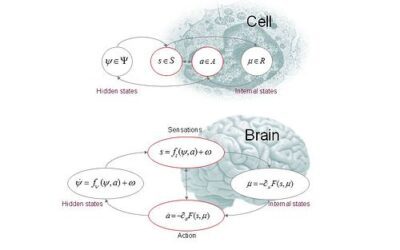
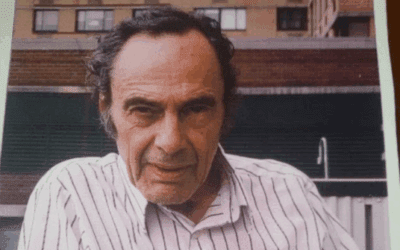


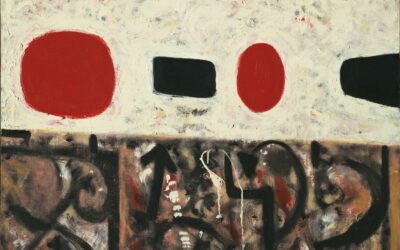

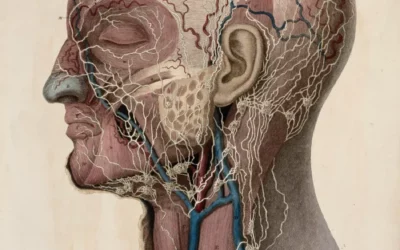


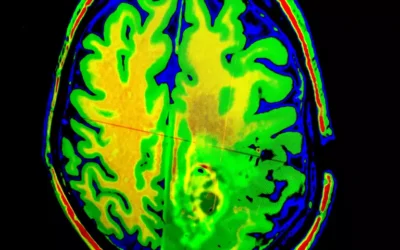

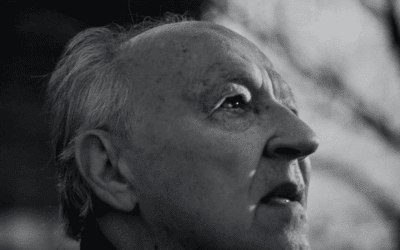



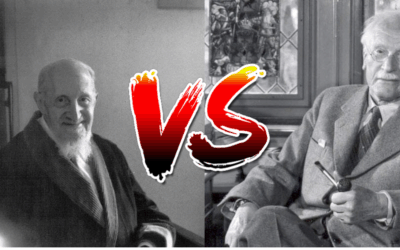








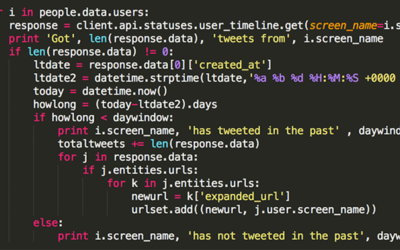
0 Comments